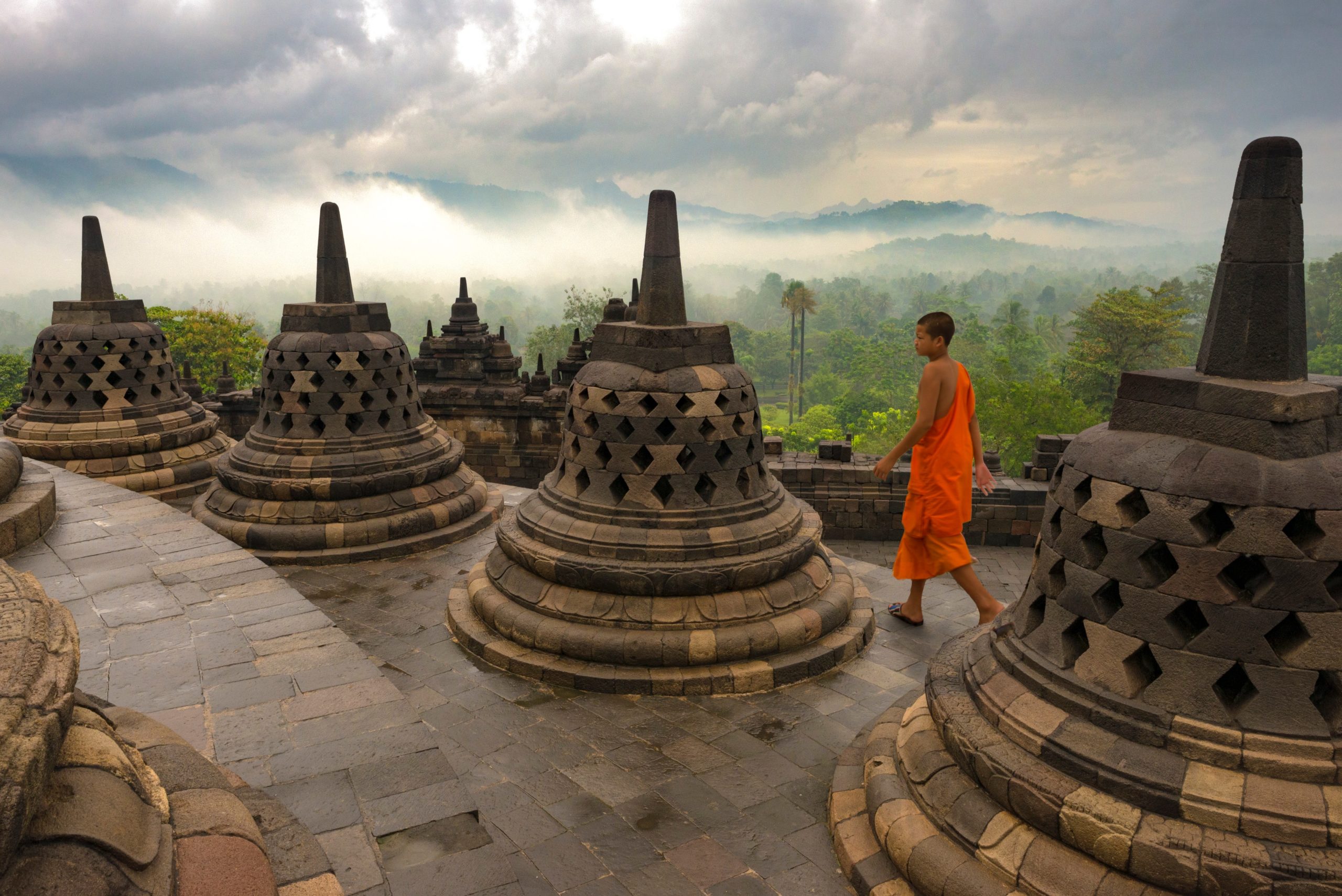We shared learning about 4 iconic world places:-
Western Wall in Jerusalem
The most religious site in the world for the Jewish people, the wall dates from about the 2nd century BCE and is the last remaining outer wall of the ancient Jewish temple. This important historical landmark is the location of various ceremonies in Israel, and you’ll frequently see new soldiers undergoing military inductions at the Wall. One of the best experiences a Jewish family can undertake is to have their child’s Bar or Bat Mitzvah at the Western Wall; one member shared pictures of such a family event.
Its proximity to the Muslim mosque has been the source of much conflict over the years. That conflict has been particularly heated since the Israeli government took full control of the Old City in the wake of the Six-Day War of June 1967.
Borobudur in Indonesia
A vast Buddhist temple surrounded by forest with 3 distinct stone levels, resembling a truncated pyramid. It is very rich in carvings and contains over 500 statues of the Buddha. It was built in AD 780, took 100 years to build and was fully renovated in the 1970s. Visitors are free to wander all over it.
Eiffel Tower
Built for the World Fair for the centennial of the French Revolution, expected to be temporary for 2 years, still standing thanks to the radio mast at its top which was too useful to demolish the tower! There are 1710 steps to the top, an apartment near the top where Thomas Edison met Eiffel. The tower is painted every 7 years in a range of colours. 72 scientists are carved under the first balcony with their names now picked out in gold.
Taj Mahal, India
Islamic ivory-white marble mausoleum on the right bank of the river Yamuna in the Indian city of Agra.
It was commissioned in 1631 by the Mughal Emperor Shah Jahan (r. 1628–1658) to house the tomb of his favourite wife, Mumtaz Mahal who died on 17 June that year, while giving birth to their 14th child; it also houses the tomb of Shah Jahan himself.
While earlier Mughal buildings were primarily constructed of red sandstone, Shah Jahan promoted the use of white marble inlaid with semi-precious stones.
Some observations:-
The symmetry is stunning; the peacefulness of the open site is in great contrast to India’s bustle; the river side is undeveloped (it was planned to be for a second black mausoleum for the Shah) and maintains the calm feeling; marble inlay work is marvellous; a hymn to love; it is in very good condition; mist there in the autumn is very thick.


